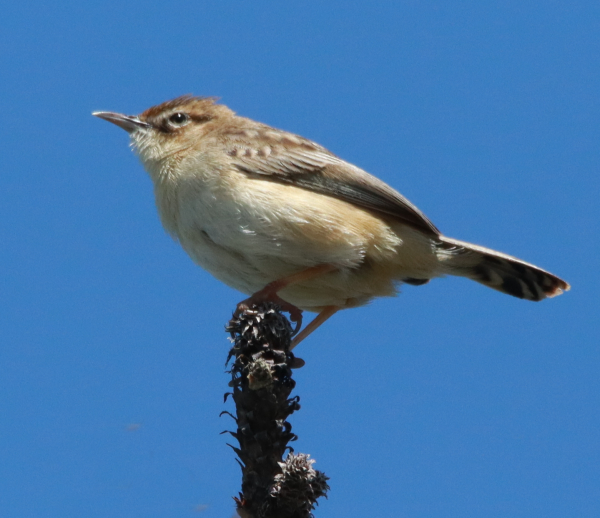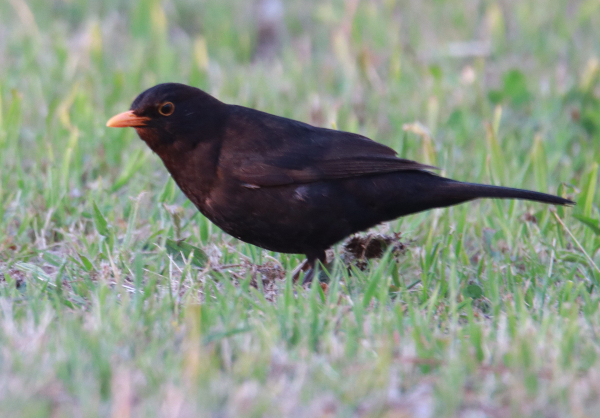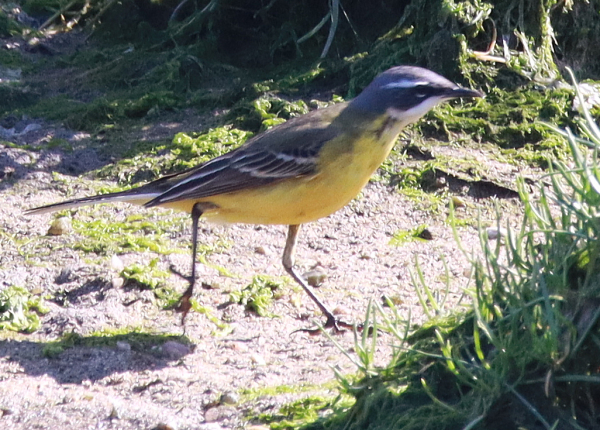
Photographed during a singing bout, the ventral side of a Zitting Cisticola doesn’t show the more distinctive plumage features of its anterior side.

An active singer in many habitats, the Eurasian Blackbird is actually a thrush that shows the form of an American Robin.

Occasionally observed foraging along the shore of the Cavado River Estuary during low tide, this Western Yellow Wagtail belongs to the Iberian subspecies.

Common Ringed Plovers were among the most obvious birds along the shallows of the Cavado River Estuary and North Littoral Nature Park.

The Church of Saint Ildefonso in Porto, Portugal was built in 1739 and is among the many distinctive historic buildings in the region.
|
A new nation of birds, a different continent and hemisphere, and an international group of birders to spend time with during primo weather: Portugal was an exciting destination! With the potential of finding a variety of exciting birds in varied habitats from the Atlantic Ocean to the beach, the sand dunes, suburban habitats (some overgrown), and a broad river estuary. Some avian highlights included Western Yellow Wagtails, Sardinian Warblers, European Stonechats, a Black-tailed Godwit, and a Eurasian Hoopoe; with longtime favorites like Eurasian Jays, White Wagtails, and Eurasian Blackbirds (a species of thrush) on hand too.
Other European birds sighted included Grey Plovers, Common Ringed Plovers, Dunlins, Eurasian Jays, Eurasian Magpies, a Common Hawk, European Honey Hawks, Northern Gannets, Yellow-footed Gulls, Pallid Swifts, Barn Swallows, Great Tits, European Greenfinches, Zitting Cisticolas, Common Wood Pigeons, and Eurasian Collared Doves. We were centered north of the city of Porto on the coast of northern Portugal, in the village of Ofir, which is located on something of a peninsula with the ocean on the west side and the Cavado River Estuary on the east side. Probably known more for surfing than birding, the Ofir area provided a good representative overview of birds in the area during the beginning of the third week of May.
In many ways, it was about the people I shared time with that made this such a special birding experience – the European birders, plus my American associates Jessica and Ryan, that really made this a special birding experience. It was a very unique opportunity to join a group of birders from Portugal, Spain, Italy, England, Ireland, Scotland, The Netherlands, Germany, Denmark, Sweden, and Finland – and what fun that was to interact in the field, at meetings, and at dinners.
I’m going to refer to the European birders by their nationality rather than by name, but there were some very enthusiastic birders, and others who were more casual. The Swedish birders were probably the biggest go-getters, searching out birds beyond our usual times, and already keyed in to most of the birds we were seeing. They were also good bird photographers, and found 2 standout species – an Eagle Owl and a pair of Sardinian Warblers. In hindsight, I wish I had asked if they would have been interested in having an Eagle Owl photo and another of a Stonechat published here, but hindsight is 20-20. Other standout birders came from England, Holland, Denmark, and Finland, but every person among us was tuned in and enjoying the birds and the company of our international group.
Leica Sport Optics provided a variety of their top quality optics for us to use, including their highest quality Noctivid Binoculars and Trinovid Spotting Scopes. The opportunity to use this equipment in the field was as much a part of the enjoyment of birding in northern Portugal as other elements of our shared activities. Using the Leica Noctivid Binoculars throughout Wednesday morning was especially enjoyable – what remarkable optics – and Leica’s Trinovid Binoculars and Ultravid Binoculars reflect similarly impressive optical quality.
Seeing the flock of 7 Grey Plovers was especially interesting, as the Grey Plover is the Eastern Hemisphere equivalent of North America’s Black-bellied Plover. In fact, they are the same species, separated only by common names – their official name is Black-bellied Plover as noted in Birds of the World. While most of the flock were in full alternate plumage, 1 was still in basic plumage and 2 others were in mid-molt. Headed for Arctic nesting territories, I was surprised to see them still so far south at this point, but it was similar to the migration stops I was seeing for American Golden Plovers near home a week earlier. The Black-tailed Godwit sighting in the estuary made my total of 3 different godwit species in 4 days personally rewarding after seeing the 2 Dakota godwits as I was leaving for the airport – there were 2 Hudsonian Godwits and a Marbled Godwit in Bobby’s Bay, about 2 miles north of home.
While birding on another continent, you are especially aware of every avian movement you perceive, looking for a new bird, hoping for a photo too – at least that’s the way I’m motivated, while appreciating my surroundings and the people around me. I sure had fun and I enjoyed every person’s company during this surprise trip to the wonderful nation of Portugal – the people there were remarkably friendly and courteous, although they sure drive fast on those cobblestone streets – ha. Thanks to everyone along the way!
Article and Photos by Paul Konrad
Share your bird sightings and photographs at editorstbw2@gmail.com